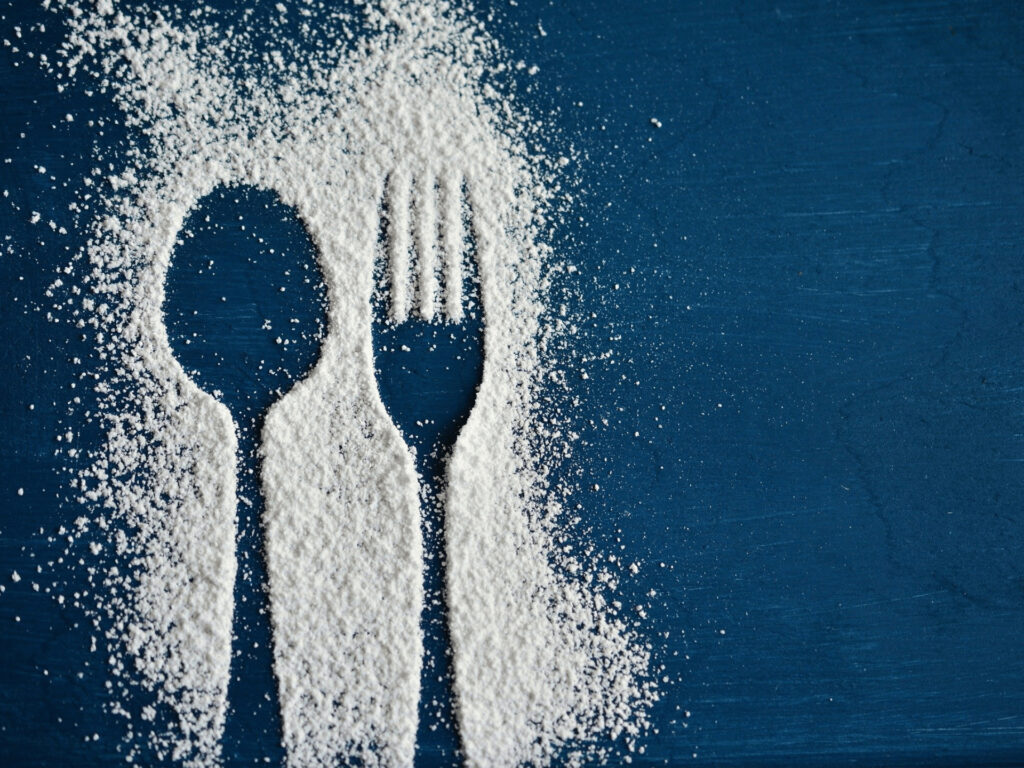Over the last century, how we eat has changed drastically. Back in the early 1900’s factory processed foods were just starting to be introduced to the market, therefore most people were eating a diet that was rich in whole foods.
The convenience of factory created foods completely changed US diets. It increased the amount of sugar and highly refined carbohydrates we consume considerably. And the increase continues. So, is it any wonder that there has been a corresponding increase in blood sugar imbalances seen throughout the western world?
Back in 1917 the average American consumed approximately 60 pounds of sugar a year. Today, that number is significantly higher at approximately 130 pounds of sugar consumed annually. Around the same time, mass production began on baked goods and goods made with refined white flour. Consumption of these products increased as well.
With grocery stores full of highly processed foods just a short drive away, it is getting increasingly difficult to avoid refined sugar and carbohydrates. And both are often hidden in common products, often without consumers knowing it. Eating these foods regularly negatively impacts blood sugar levels. And this increased consumption ultimately can lead to chronic blood sugar imbalances.
Sugary foods, highly refined carbohydrates and alcohol are broken down in the body into a sugar known as glucose. Glucose is used as an energy source in the body. The level of glucose in the body is controlled by the hormone insulin. After eating, blood sugar levels rise, and insulin is released. The insulin then brings the blood sugar levels back down into a normal range.
When we eat sugar, and refined carbohydrates, and drink alcohol it can cause blood sugar levels to rise too quickly. The result is a release of large amounts of insulin needed to bring blood sugar levels down. But the body can release too much insulin. This causes blood sugar levels to go too low or “crash” leading to feelings of fatigue and moodiness. And it can even make us feel hungry again.
The blood sugar roller coaster has become a common daily occurrence for many. But it is not normal, and it is not healthy. Over time, this imbalance in blood sugar levels will lead to pre-diabetes, metabolic syndrome, insulin resistance and even diabetes.
Anxiety and depression
When blood sugar levels fluctuate wildly, it has a direct effect on neurotransmitter production. Neurotransmitters are the chemicals in the brain that help control moods. When you eat starchy and sugar filled foods, production of serotonin, the feel-good neurotransmitter increases. This rise in serotonin levels is short lived however, and before long, blood sugar levels crash and fall. The body’s response to low blood sugar levels is to increase production of the stress hormones adrenaline and cortisol. When this stress response occurs, and these hormones are released, blood sugar levels go up as the body pulls from stores of glucose in the liver to prepare to either fight or run from the source of the stress.
But the stress response to low blood sugar has another negative consequence for you mood. It contributes to anxiety. And when blood sugar is low and the brain can’t get the energy it needs from a healthy balance of glucose, then you could experience an increase in depression as well.
Brain fog and trouble focusing
When many people hit midafternoon, they find that they suddenly have a difficult time thinking and making decisions. Their brain feels foggy and it’s hard to be productive. This is often the time when people reach for a caffeinated beverage or something sweet or starchy to eat.
The cells of the brain require more glucose than any other cells of the body. When blood sugar levels rise sharply after a meal or snack, and then fall sharply shortly afterward, it leaves the brain without the energy it needs to function. This can cause a lack of focus and feeling of fogginess. Making simple decisions becomes difficult and it can be difficult to concentrate.
Excessive sweating
As stated before, when blood sugar levels go low, it triggers a stress response and releases cortisol and adrenaline. This raises blood sugar levels. Cortisol and adrenaline are known to cause sweating, which can be excessive. As blood sugar levels return to normal, the sweating should stop.
Addiction to caffeine, alcohol or nicotine
Addiction to caffeine, alcohol and nicotine are common. But there is a strong correlation between each of these addictions and blood sugar imbalances. When blood sugar levels are low, the natural reaction of the body is to increase levels as quickly as possible. Caffeine, alcohol and nicotine all raise blood sugar levels in the body. And so, the body will create cravings for these substances to help keep blood sugar levels at a normal level.
Abdominal fat
When blood sugar levels are high, the body naturally produces insulin. Insulin regulates how the body uses the glucose and is the fat storing hormone. When levels of insulin are high it communicates to the body to store excess glucose as fat. As the body gains weight, it tends to do so around your belly.
Cravings for sugary or starchy foods
After you eat, when blood sugar levels are higher, you won’t feel hungry. But because of the blood sugar roller coaster, when levels come racing down, your hunger will increase, and you will be drawn to sugary and starchy foods that can quickly raise blood sugar levels. Unfortunately, the pattern repeats, and you end up overeating again and again and the cycle continues. This ultimately leads to diseases such as diabetes, insulin resistance and metabolic syndrome.
If you are dealing with most of these symptoms, then you may be facing blood sugar imbalances. If so, it is important to start getting your blood sugar levels under control. This can help you avoid facing chronic health issues that are difficult to reverse. An FDNThrive functional health coach can help you to discover the best balance of foods for your body. They can also help you bring blood sugar levels and other system imbalances back into balance so that you can feel better again.







